Space is a mystery that has captivated humankind since the beginning of time, since we first decided to look up at night. From religious, superstitious, and spiritual inspiration to art, literature and science, the movement of planets, the creation of stars and the appearance of comets are just a few examples of what has mystified us for countless centuries. When it comes to rare astronomical events, it’s the special and almost holy nature of them that turns our eyes towards the heavens, so let’s check out the Cosmos.
10. The Blue Moon
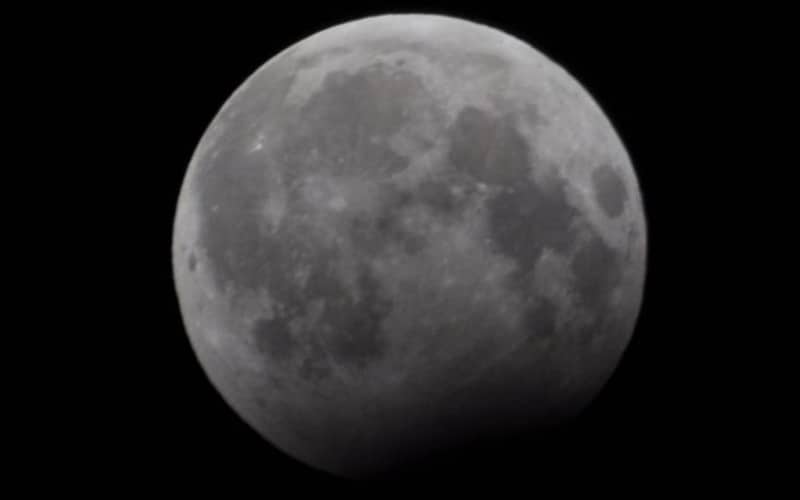
First Noticed: Not known
Who Discovered It: Philip Hiscock in Sky and Telescope (Naming it a Blue Moon)
Last Occurrence: 2018
The last Blue Moon occurred on March 31st in 2018, with the next one occurring in the Spring of 2019. Said to return every 2 years, it’s the second full moon in a calendar month, with a gap of 29 days. Although it’s not technically blue, the Moon can appear to be blue when our atmosphere contains coloring particles. Other anomalies can make the Moon appear blue, like the one that happened in 1883, when the volcano at Krakatoa threw up ash after exploding. A Super Blue Moon is when the Moon is closer to the Earth in its orbit, appearing much brighter than usual and when it’s in the Earth’s shadow, it’s called a Blood Moon, due to taking on a reddish tint. We’ve all heard the saying, “Once in a Blue Moon”, which denotes a long time in between events, however 2 years isn’t too long to wait for that special time when the full Moon visits us twice in one month.
9. The Suicidal Comet
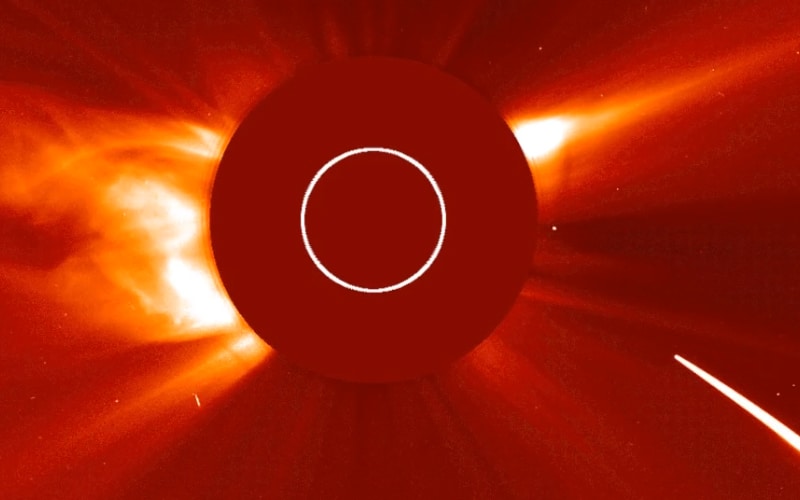
First Noticed: 2013
Who Discovered It: NASA
Last Occurrence: 2013
The Hubble Space Telescope captured a rare event in 2013, when a comet seemed to randomly disintegrate. Usually too small and difficult to locate, comets are fragile and can be smashed into pieces when colliding or moving too close to massive bodies. Asteroid P/2013 R3 appeared to spontaneously obliterate itself unexpectedly when it was slowly pulled apart by the gradual effects of sunlight. This might seem like an overreaction, but when the rays of the Sun shone on this comet, they caused it to spin out of control. The intensity of the rotation increased gradually until it splintered into approximately 10 large pieces that were said to weigh about 200,000 tons. These chunks floated away from each other leaving particles in their wake, travelling slowly. If any pieces don’t get drawn to the Sun they could become future meteors.
8. The Total Solar Eclipse
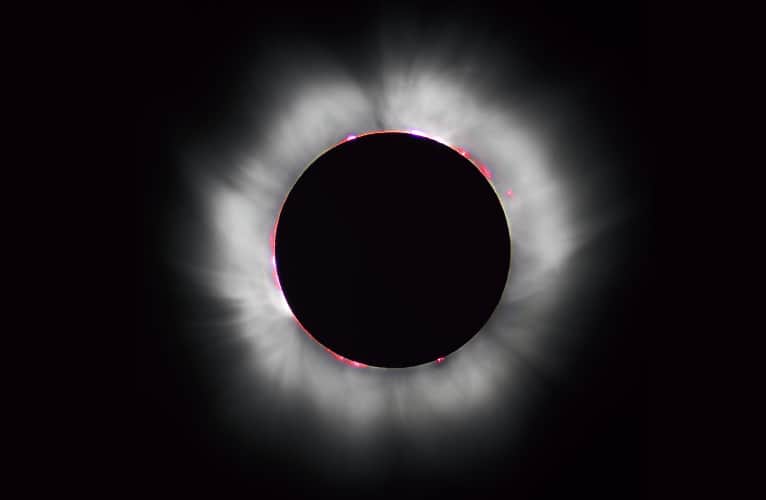
First Noticed: 2134 B.C.E.
Who Discovered It: Ancient Chinese Astronomers
Last Occurrence: 2017
When the New Moon passes between the Sun and the Earth, casting the darkest part of its shadow on earth, it’s called a Total Solar Eclipse. Using special glasses to view it, you can see a black disk blocking the Sun. With annular and partial solar eclipses, the Moon is only blocking part of the Sun. During a total eclipse, the Earth is thrown into darkness as though night has returned for a few brief minutes, which is confusing for animals and insects, if not humans. While Solar Eclipses can be seen a few times per year it’s very rare to experience a Total Solar Eclipse. The last one that occurred in the U.S. was in 2024 and astronomers estimate that we will be waiting until 2044 before we see the next one. That is, from a specific location, as you can view a Total Solar Eclipse from some place on the Earth once in every 18 months, which means 2 total eclipses of the Sun for every 3 years.
7. The Great White Thunder Storm
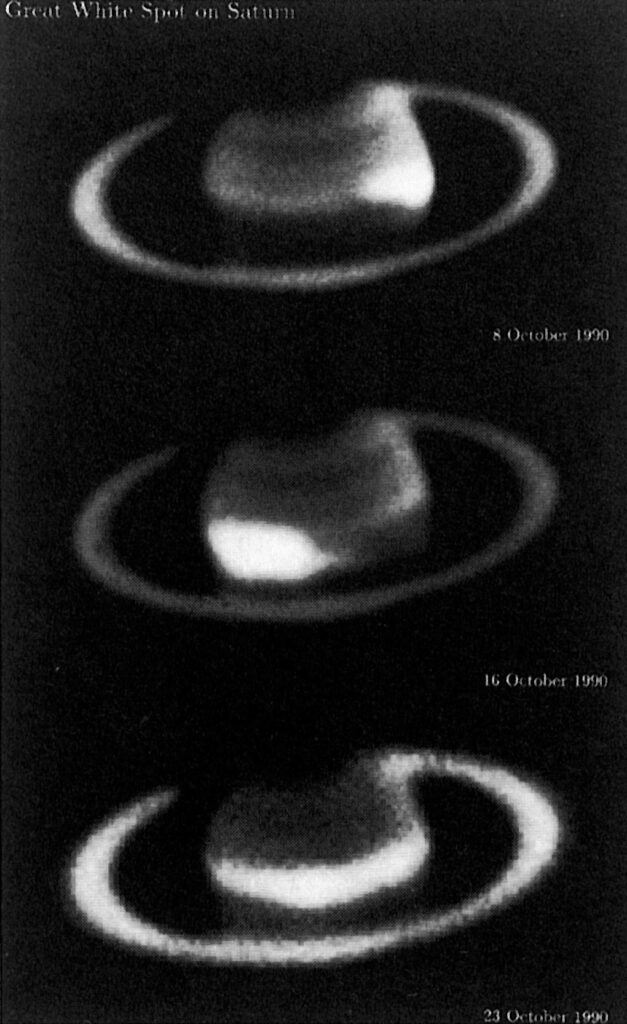
First Noticed: 1876
Who Discovered It: Astronomer Asaph Hall
Last Occurrence: 2010
Also called Great White Spots, these storms occur every 20 – 30 years on the northern hemisphere of Saturn, when it’s most tilted toward the Sun. The massive storm formation is filled with clouds that are rich in ammonia, complete with violent thunder and lightning. The storm measures half the diameter of Earth, with approximately 10 string lightning bolts happening every second, with lengths of 10,000 miles, vaporizing water content in Saturn’s atmosphere. The intensity of the thunder and lightning grows as the water condenses, creating storms that are said to be 10,000 times stronger than the ones we have on Earth. The weight of the water in the atmosphere causes the storms, resulting in the cooling of the upper atmosphere which gets so cold that it takes 20 – 30 years to trigger the next storm. The next one should occur around 2030 to 2040, so let’s hope we’re around to see it live.
6. The Triple Jovian Eclipse on Jupiter
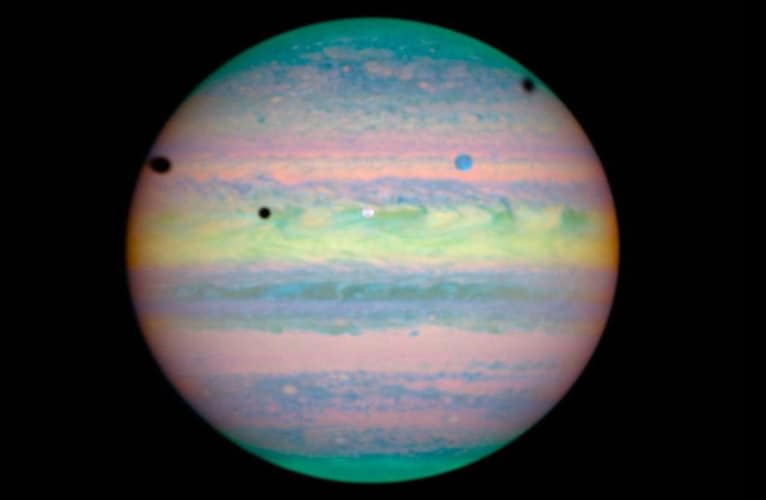
First Noticed: 1675
Who Discovered It: Astronomer Ole Rømer
Last Occurrence: 2015
What is called a Triple Jovian Eclipse occurs on Jupiter, created by a lineup of three Galilean moons: Europa, Callista and Io. While we marvel at lunar and solar eclipses, this triple eclipse across the face of the gas giant would be awesome, if it were possible to view it from the perspective looking out from the surface of Jupiter. According to experts, we won’t get to see it again until 2032. Jupiter has a whopping 16 moons, but the rare alignment of the 3 biggest moons, showing the shadows on Jupiter’s surface from our perspective, holds great wonder for space enthusiasts. This event has been captured before, by NASA’s Hubble Space Telescope, however it’s difficult to obtain images of the entire occurrence, since Jupiter moves quickly across the telescope’s view. Hopefully, we’ll have a better chance of seeing it in all its glory next time, if technology allows it.
5. The Transit of Venus
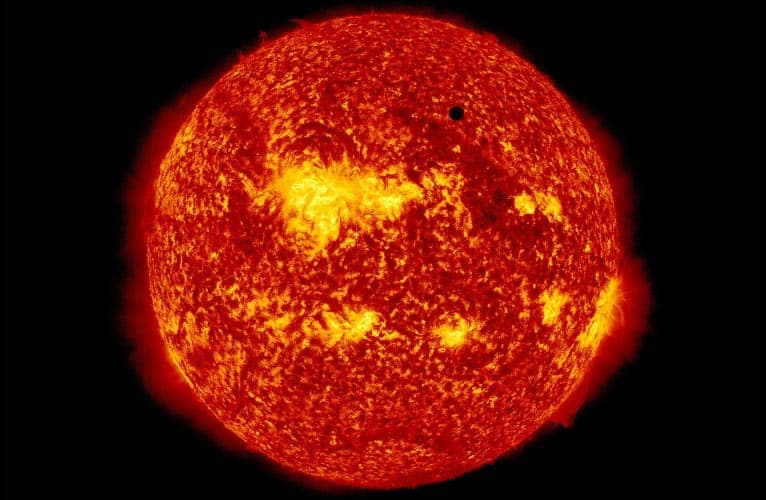
First Noticed: 1639
Who Discovered It: Astronomer Jeremiah Horrocks
Last Occurrence: 2012
When Venus travels between the Sun and the Earth, it’s called the Transit of Venus, resulting in a view that shows Venus as a black disc in the Sun’s shade. This transit occurs every 8 years, although it takes 110 years to see it occupy the same position of a previous event. Most recently recorded in 2012, the Venus Transition usually lasts several hours. Even though Venus’ diameter is 3 times the size of the Moon, it appears smaller due to being further away from Earth. Historically important for scientific studies of the size of the Solar system, the Venus transit helped to gain proper estimates of the distance between the Sun and the Earth in 1639, which – until that point – had not been so accurate. When the transit occurred in 2012, scientists were able to achieve new opportunities for research, especially for techniques needed to search for exoplanets, which are outside the Sun’s Solar system.
4. A Huge Star Nursery
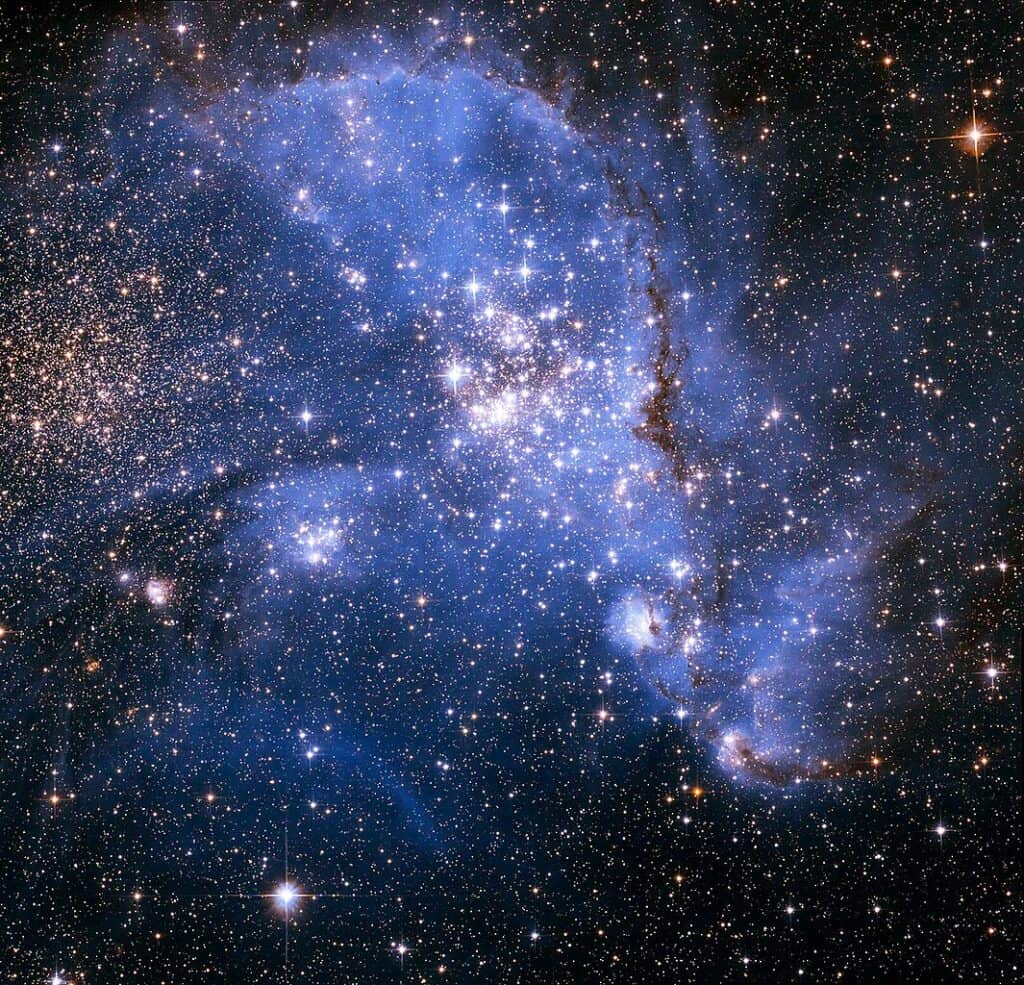
First Noticed: 2006
Who Discovered It: NASA
Last Occurrence: 2006
There are at least 150 regions in the Milky Way that contain globular clusters with approximately one million stars, which are ancient and keeping secrets about their formation. In 2006 a pre-natal cluster was discovered that was full of gas but contained virtually no stars. This rare celestial object exists deep inside the Antennae galaxies that are 50 million light-years away from Earth, where scientists hope that many new stars will be birthed. These scientists state that such regions stay star-free for about 1 million years, and the reason why this rare astronomical event is exciting is because it affords us the opportunity to learn about the Universe’s mysterious ways. It’s believed that these regions are responsible for the birthing of most of these stunning globular clusters captured by the Hubble Space Telescope, along with the colliding galaxies that are said to produce them.
3. Halley’s Comet, the Rare Visitor
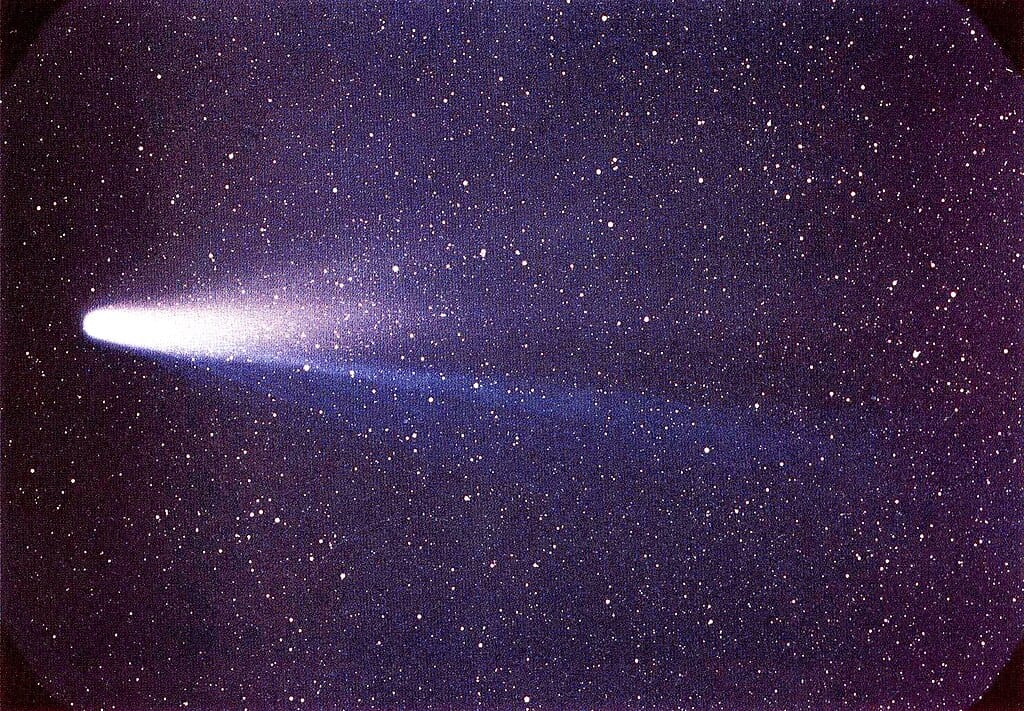
First Noticed: 240 BC
Who Discovered It: Astronomer Edmund Halley (officially in 1531)
Last Occurrence: 1986
Orbiting around the Sun every 75 years, Halley’s Comet is a periodic comet that was named after Edmund Halley in 1531 when it was discovered. Following an elliptical orbit, its closest approach is 46 million miles to the Sun, which illuminates the comet while it makes its trip through the Solar system. Visible from a variety of locations on Earth with the naked eye, it has a length of 9 miles and a width of 5 miles. Comprised mostly of icy particles, Halley’s Comet paid us a visit in 1986 and will not return until the year 2061. Considered by many to be the most famous comet, it also contains water, iron, ammonia, sodium and carbon monoxide. Before Halley made it official, this comet had been recorded by early astronomers since 240 BC, from civilizations such as the Chinese, Babylonians and chroniclers from medieval Europe.
2. Leonid Meteor Storms
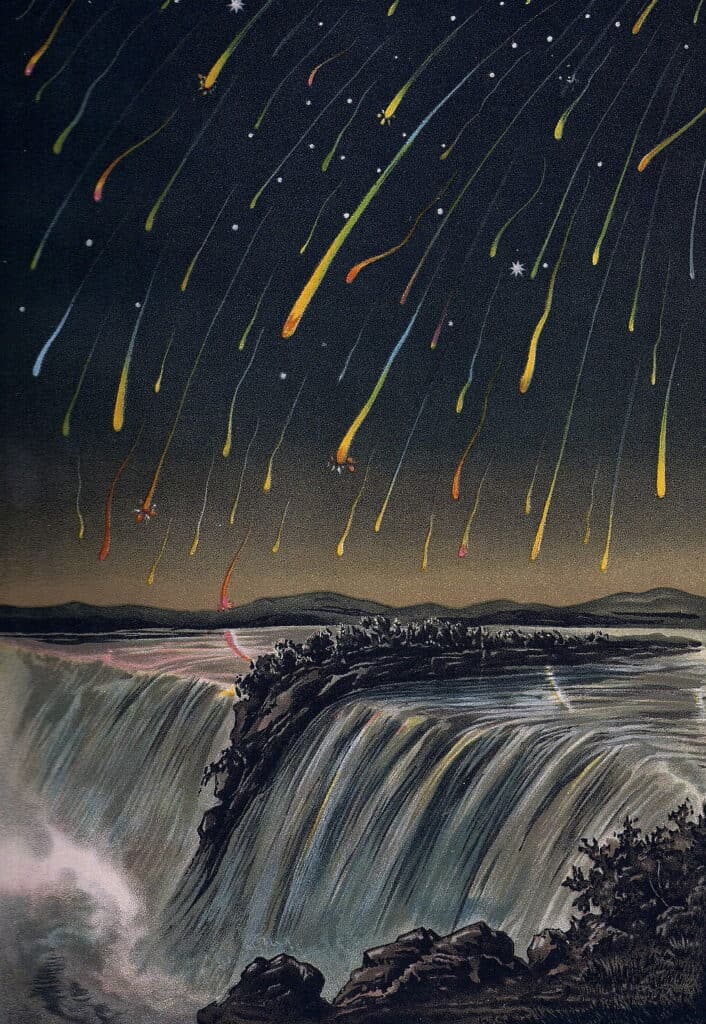
First Noticed: 902 A.D
Who Discovered It: Chinese Astronomers
Last Occurrence: 2018
An abundant meteor shower brought about by the comet Tempel-Tuttle is named Leonid, due to the location of their radiant in the Leo constellation. These meteors seem to radiate from that position in the sky and they occur every year around November 17. This annual Leonid shower can deposit around 12 – 13 tons of particles across the face of the Earth. Sometimes accompanied by storms, they were first documented in 902 A.D. Previously thought to be an atmospheric phenomenon, the study of the Leonid shower has helped the scientific community with further insights into the study of meteors. The event in 1833 was particularly spectacular, as it is estimated that over 100,000 meteors occurred per hour and after the storm dissipated, it was believed that over 240,000 meteors occurred during the nine hours of the storm, which happened over the east of North America.
1. Planetary Alignment of The Moon, Mars, Mercury, Venus, Jupiter and Saturn

First Noticed: Observed since Ancient times
Who Discovered It: Unknown
Last Occurrence: 2000
You’ll have to wait until 2040 before you can get a chance to see the auspicious alignment of six planets: The Moon, Mars, Mercury, Venus, Jupiter and Saturn. Attributed with magical significance by religious and spiritual believers, this event is very rare, with the last one occurring in 2000. In 2011 there was a triangular alignment of Jupiter, Mercury and Venus, which is said to occur every 4 years. It’s important to note that the alignment of the planets is not like what they show in the movies. The planets don’t orbit perfectly on the same plane, as they tend to move in different orbits in three-dimensional space. When astronomers say planetary alignment, they mean that some of the planets occupy the same general region in space, which usually consists of 2 or 3 planets at a time. To have many more that 2 or 3 planets that all align makes a large planetary alignment the rarest astrological event, or at least one of them.
This article originally appeared on Rarest.org.
More from Rarest.org
1963 Franklin Half Dollar Value Guide
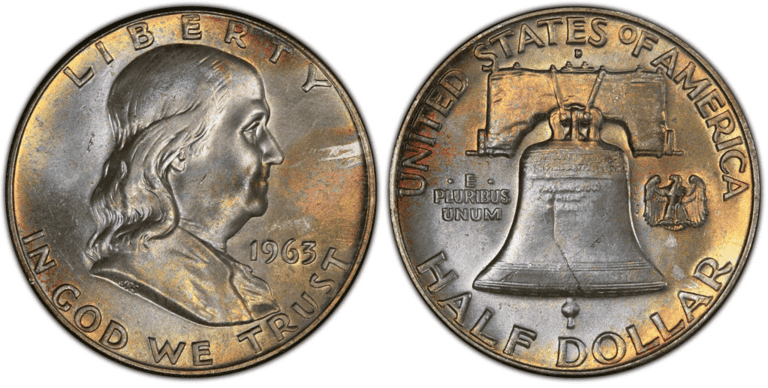
The 1963 Franklin half-dollar is made of 90% silver and 10% copper. Specifically, it contains 0.36169 troy oz. The 1963 Franklin half dollar has a value of 50 cents, a mass of 12.50 grams, a diameter of 30.61 millimeters, a thickness of 1.8 millimeters, and a reeded edge. Read More
1934 Buffalo Nickel Value Guide

Except for the reverse, the Type II Buffalo nickel replicates the Type I of 1913. If you check the coin’s reverse, the bottom portion has been redesigned on the Type II. Read More
1996 Washington Quarter Value Guide

The 1996 quarter is an interesting coin regarding history, value, and composition. Thus, it is not surprising that some people are interested in adding this coin to their collection. Read More
